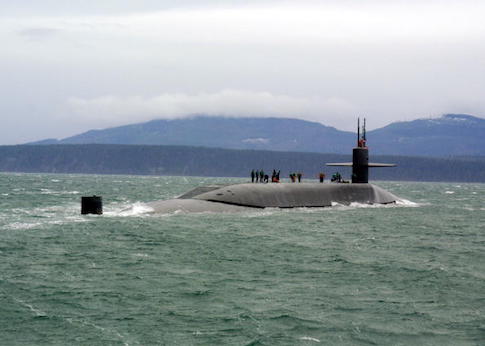The United States Navy is hoping to accelerate the development and construction of its Columbia-class nuclear ballistic missile submarines in order to get them in service as soon as possible.
The slated 12 Columbia-class submarines will replace 14 Ohio-class boats and will continue the Navy's ability to carry nuclear ballistic missiles around the world. The Ohio-class boats, whose lives were already extended to an unprecedented 42 years, will be phased out in the coming years as their end-of-life dates approach. The oldest Ohio-class boat, the USS Ohio, was commissioned in 1981 and the youngest, the USS Louisiana, was commissioned in 1997.
Procurement of the new boats is slated to begin in 2021 with the submarines being active starting in the early 2030s, Warrior Maven reports. The Columbia-class boats would serve well into the 2080s.
"Depending upon available resources, the Navy plan is aligned with the current 30-Year Shipbuilding Plan," William Couch, Naval Sea Systems Command spokesman, told Warrior Maven.
[...]
The administration's 2019 budget request, released earlier this year, has already increased funding for the service's new nuclear-armed ballistic missile submarine by $2 billion over this year's amount in what appears to be a clear effort to further accelerate technology development and early production. Several Congressional committees are strongly supporting funding for the new submarine in their respective budget mark ups.
The budget request, which marks a substantial move on the part of the Navy and DoD, asks for $3.7 billion in 2019, up from $1.9 billion in 2018. The new budget effort is quite significant, given that there has been a chorus of concern in recent years that there would not be enough money to fund development of the new submarines, without devastating the Navy shipbuilding budget.
The acceleration of shipbuilding is a current Naval priority as the service seeks to expand the fleet to 355 ships. The Navy plans to have 12 Columbia-class submarines that will carry 16 Trident missiles each. The plan is for 12 boats to replace 14 because Navy developers say the Columbia-class' improved technology – namely its "life-of-ship" reactor core – will allow the new fleet to maintain the same sea presence as the current larger fleet.
"Navy continues to aggressively pursue acquisition strategies to build ships more quickly and more affordably," the Navy's shipbuilding plan states.
Though defense acquisition projects are often infamous for going over-budget and missing deadlines, the Navy's newest aircraft carrier, the USS Gerald R. Ford was delivered on time and under budget.
